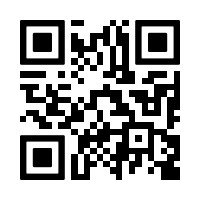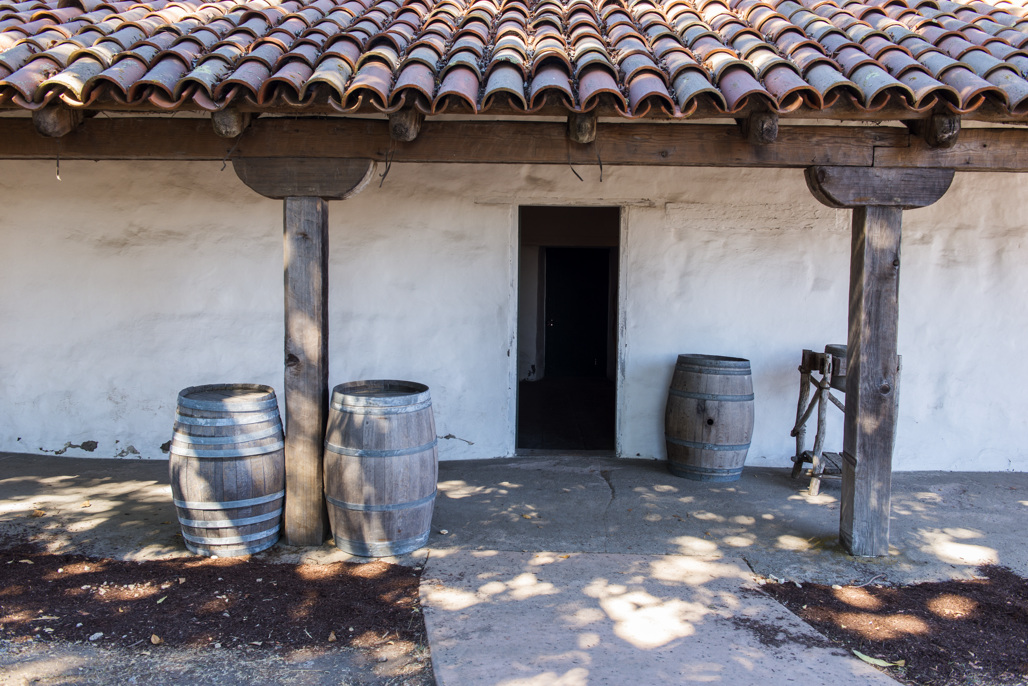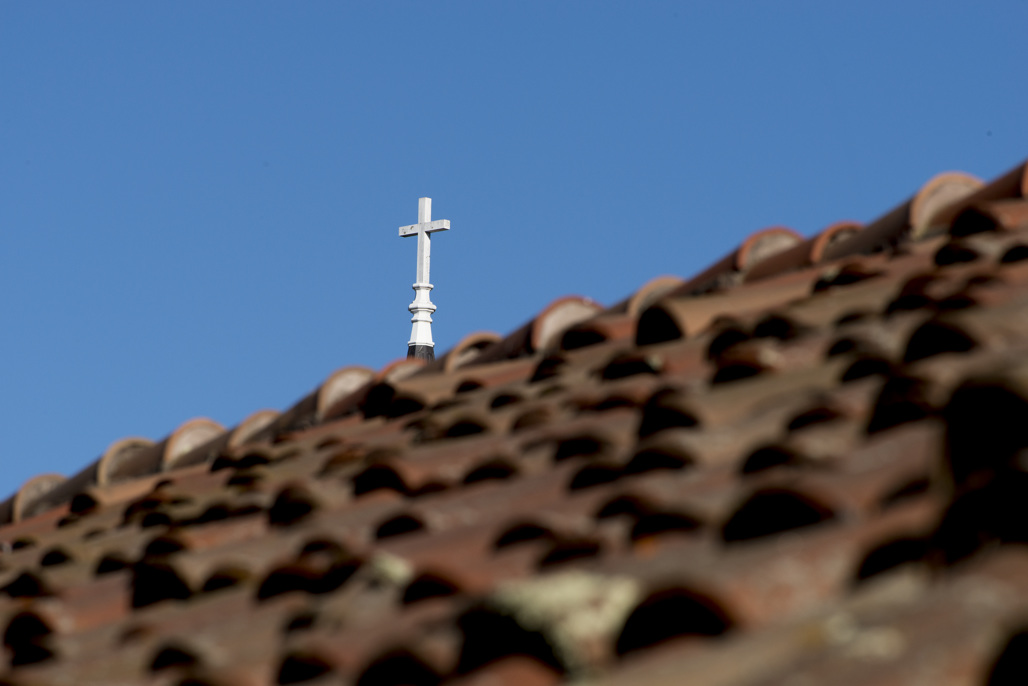View our guided hikes and other public programs schedule and make a reservation by visiting our Parks Events page!
 (Landscape)).png)
Download the Virtual Adventurer App and hear their stories

1.Scan QR code to download the Virtual Adventurer App
2. Select & download Santa Cruz Mission SHP Adventure
Visiting the Santa Cruz Mission
The Santa Cruz Mission State Historic Park sits atop Mission Hill offering a patio, gardens, and excellent views of the city. The park features the only building left of the 12th California Mission, Misión la Exaltacion de la Santa Cruz, founded by the Franciscans in 1791. Restored to its original appearance, the austere single-story adobe was once housing for the California Indian residents of the Mission. Exhibits inside tell the story of the mission through the lens of the experience of the Ohlone and Yokuts people.
Mission Exhibits
This portion of the adobe, built in the early 1800s, is the only surviving building from Mission Santa Cruz. Archeological excavations in the 1980s revealed that this had been Indigenous family housing, the only example of its kind still standing in California today. The story of the Ohlone and Yokuts Indian experience at the Santa Cruz Mission is depicted through exhibits and a wall-sized movie projection. These are featured on guided tours, and may also be viewed at leisure on self-guided tours. The seven-room building also includes information about Ohlone lifeways prior to European contact, archeological excavations and Rodriguez and Neary family histories.

Virtual Bell Exhibit
Visit our online exhibit For Whom the Bell Tolls: Changing Symbolism of California Mission Bells, 1769 to today. Through this virtual exhibit, visitors have the opportunity to:
- Investigate the history of the bells in the California Missions, and the bell markers along the El Camino Real.
- Hear from a variety of perspectives throughout time from the 18th century to the present.
- Think about the bells as symbols holding different meanings for different communities over time.
Reexamining Our Past
At Santa Cruz Mission State Historic Park (SHP), we acknowledge that for California Native Americans, this is a site of great loss and trauma. The Spanish Mission system disrupted Native lifeways and traditions through the use of forced manual labor, severe punishments, and the spread of deadly disease. Despite this violence, California Native American people survived, persisted, and continue to practice their culture and traditions. It is our responsibility to share this complex and difficult history with the public in an appropriate and respectful way. The devastating legacy of the Spanish mission system is still widely felt today.
The mission was built on the traditional lands of the Uypi people, who are the ancestral relatives of the Amah Mutsun Tribal Band. Many California Native American tribes and families, both near and far, were impacted by the mission. For some years now, park staff have consulted with the local Native community to listen to their needs and support their capacity to access cultural resources at the mission site and surrounding State Parks properties. In addition to this, interpretation at Santa Cruz Mission SHP has been updated in collaboration with the Amah Mutsun.
Still, there is more to be done. We commit to work with California Native American people to create a more welcoming place for healing and sharing of personal stories of survival and cultural resilience. These stories will help inform updated exhibits, educational content, and interpretive programming to tell a more accurate history of the mission.

 Watch it here, now!
Watch it here, now!




